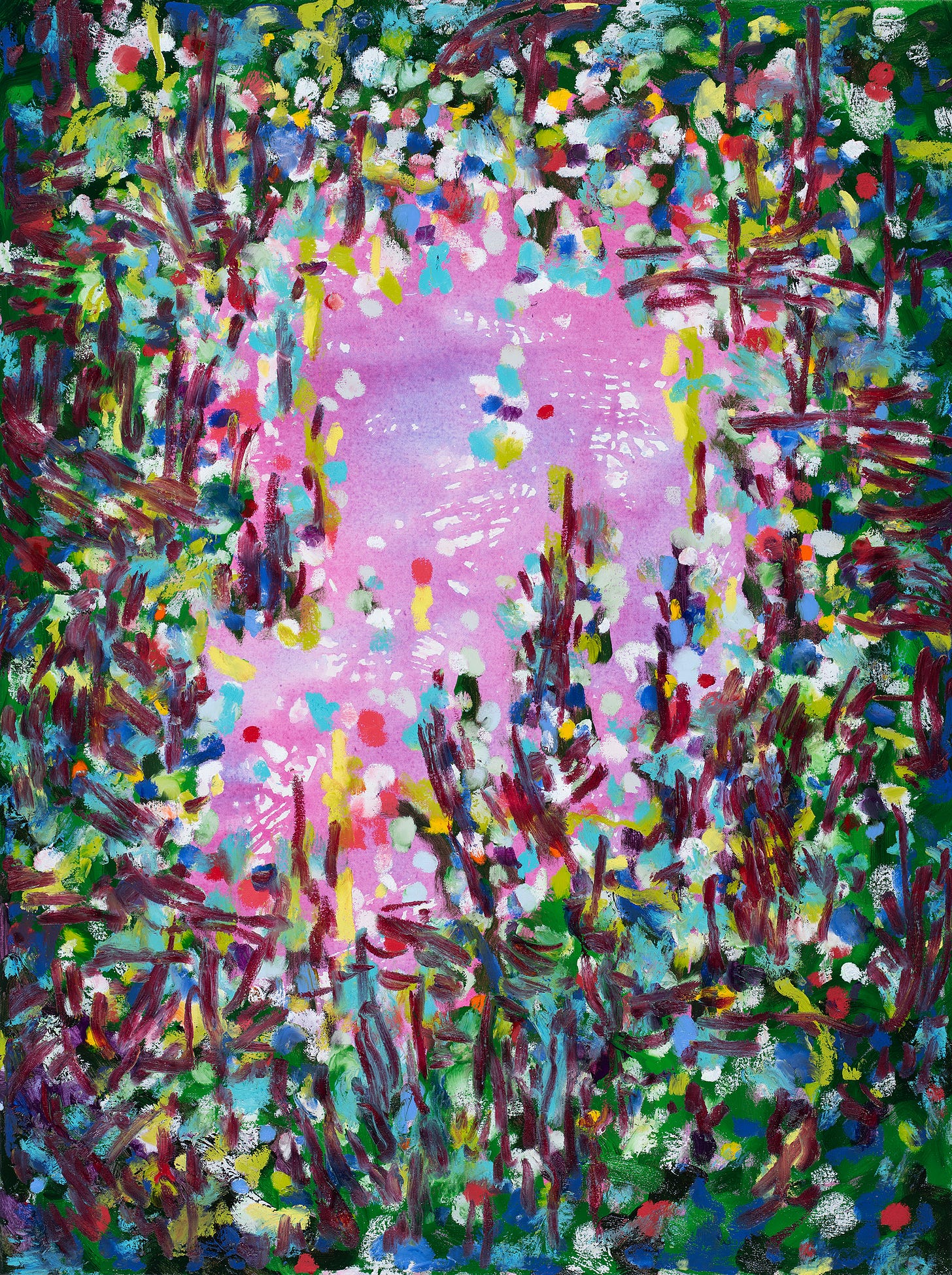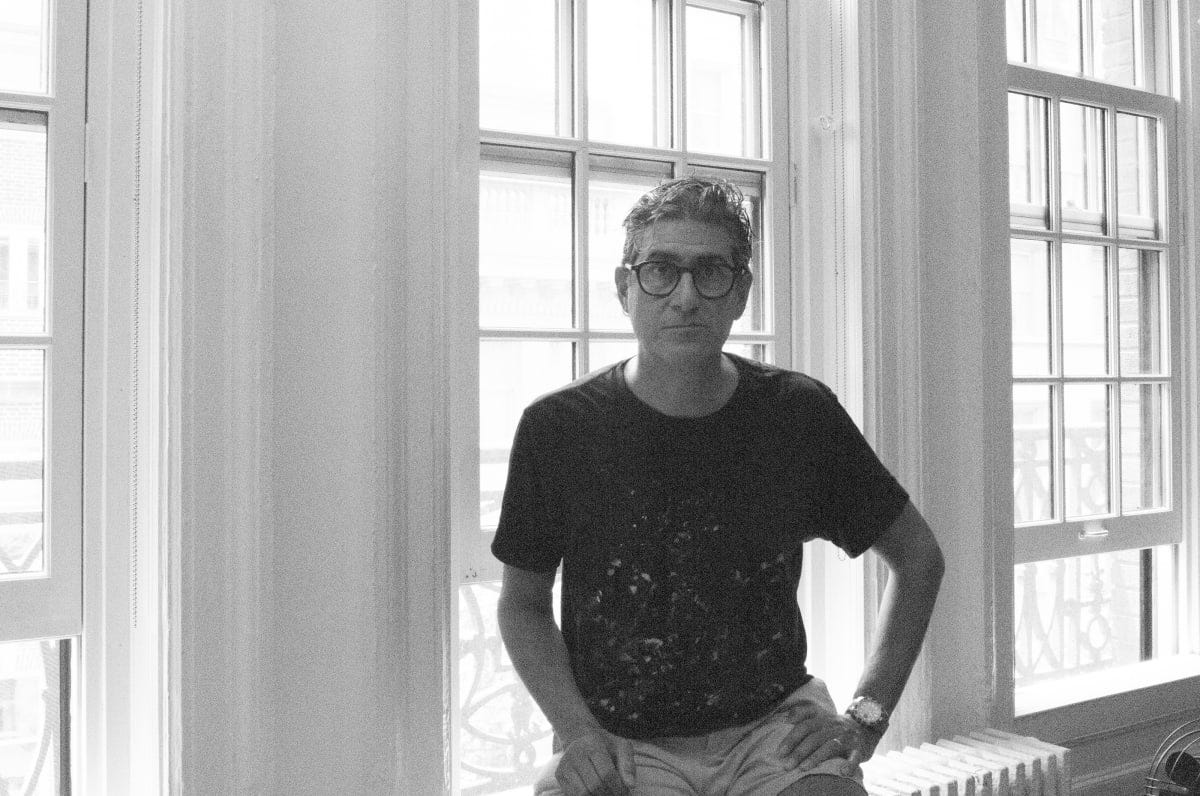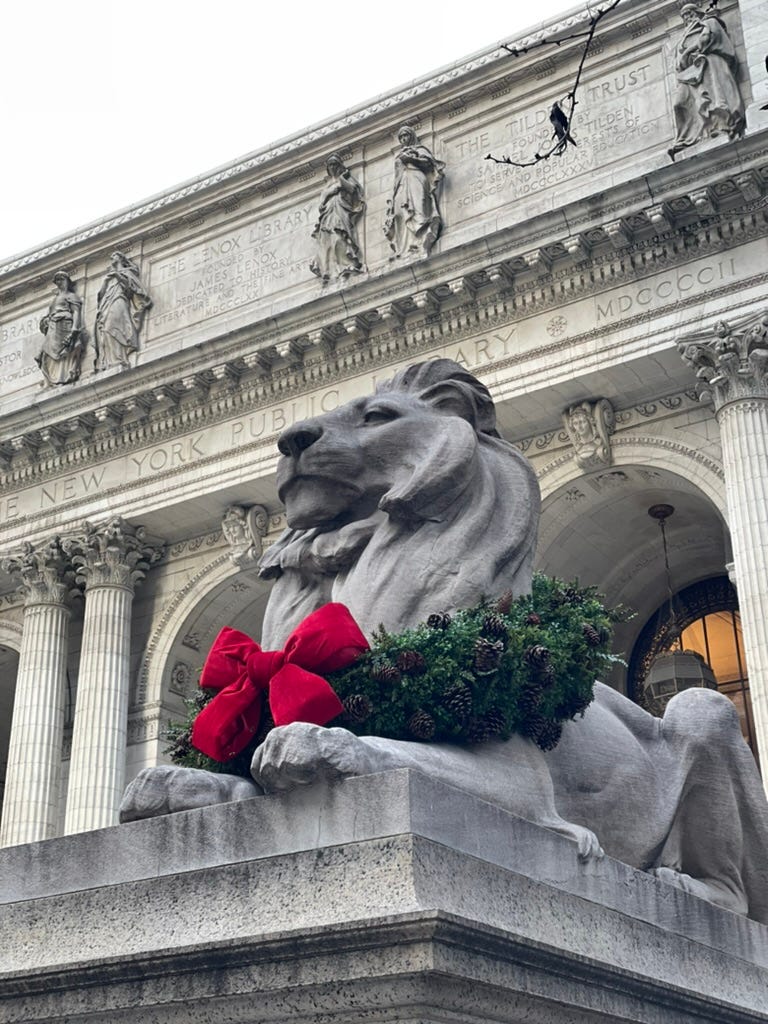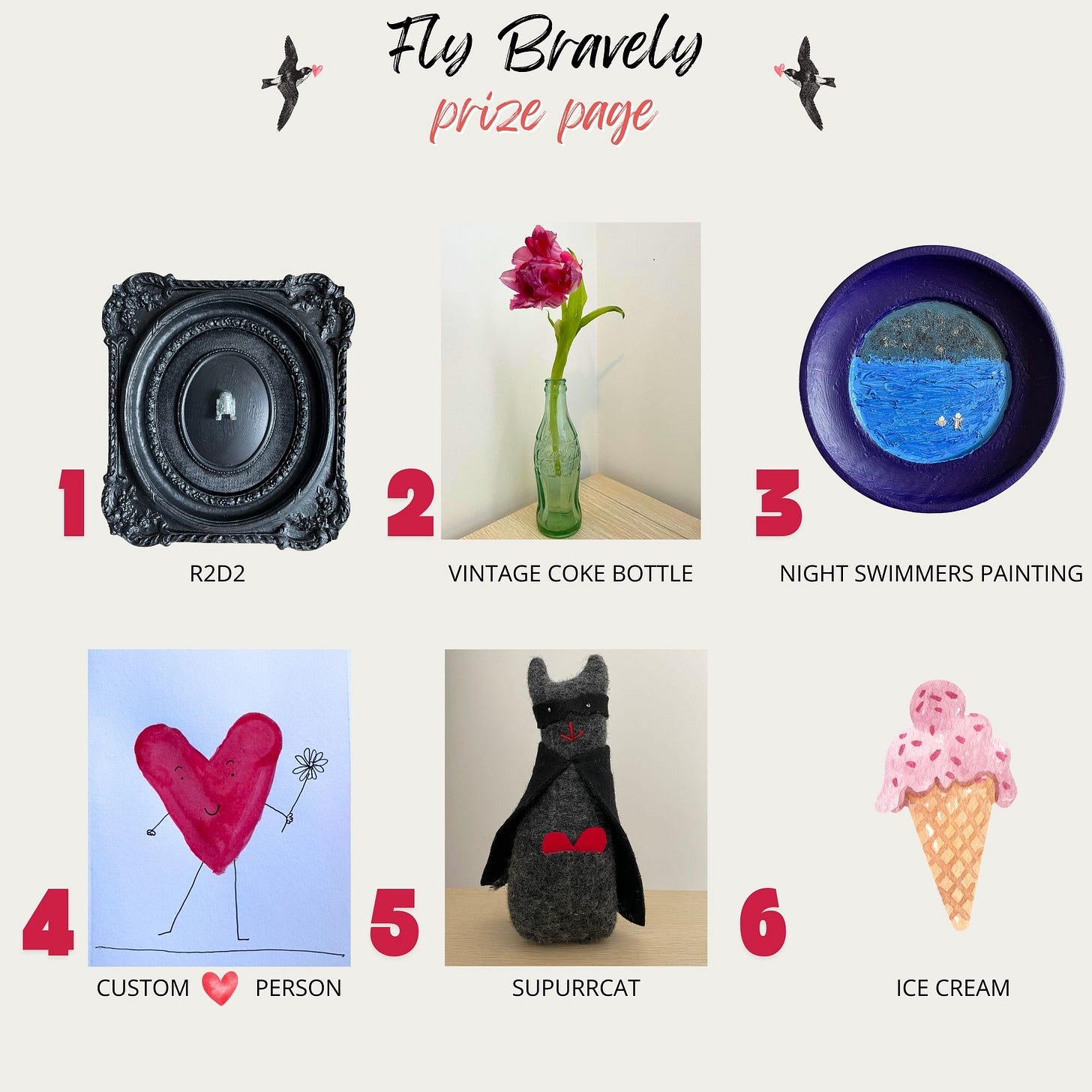Behind the Canvas: Portrait of an Artist
An inside look at a NY artist whose work is close to my heart.
This week, the art world descends on Miami Beach for North America’s most important art fair: Art Basel. It’s a time for artists, galleries and collectors to reconnect to see, sell, and buy works from every corner of the globe. As art fairs go, it’s one of the year’s biggest and most important weeks on the art world’s busy globe-trotting calendar.
From cutting-edge contemporary art to old masters, it’s a time that reminds us how art is both a personal expression and a global conversation.
In celebration of the week ahead, I bring you a behind-the-scenes look at the artist who I love the most, my husband, Michael De Feo.

In the 1990s, Michael was more than just an art student at School of Visual Arts in NYC—he was a visual storyteller transforming the urban landscape. Armed with scavenged blueprint paper and a vision, he screen-printed his unique flowers and wheatpasted them to lampposts, scaffolding and buildings across the city. His iconic flowers became an unexpected urban art installation, earning him the moniker "The Flower Guy" which would define his early artistic identity. His flower was always iconic, but it’s appearance on the cover of New York Magazine’s inaugural Reasons to Love New York issue, truly cemented its place in NYC history.
Michael's work has evolved from his days a college student. He’s moved from street walls to canvas, yet the essence of his work remains a profound exploration of nature, ephemerality, and transformation. His current body of work—oils on canvas and acrylics on paper—tells a story of hidden layers and subtle revelations.
His painting process dances between emergence and concealment. Each work begins with an underlayer that breathes life into the final piece. In oil paintings, an acrylic wash provides the initial layer of color. For works on paper, a watercolor foundation sets the stage. Sometimes these original layers peek through like memories, other times they're completely obscured, much like how our past experiences shape us, even when they're not immediately visible.
To give you a more intimate look into his artistic world, I sat down with Michael and asked him five questions:
How has your relationship with flowers—from those early street art days to your current work—evolved over the decades?
In the 1990s, those flowers were my rebellion, my way of interrupting the urban landscape. They were unexpected bursts of color and life in concrete spaces. Back then, it was about inserting whimsy and play into the formidable and gritty environment of a large urban landscape. It was also about making sure my work got seen when, as an art school students, galleries wouldn’t give me the time of day. Now, flowers are more of a springboard into my developing my works on canvas. My early work on the streets were graphic communications that could be read easily and quickly. These new paintings are layered and complex.
Your work speaks deeply about ephemerality. What draws you to explore themes of transience and transformation?
Living in New York, life is constant change. I've always been fascinated by the beauty of impermanence. Nature is the perfect metaphor for this. A flower blooms magnificently and then decays, but that decay is itself a form of beauty. My layered paintings reflect this: you see remnants of earlier expressions peeking through. It's a visual representation of memory, of how our past is never truly erased but instead informs our present.
Can you walk us through how your oil paintings come to life?
The oil paintings on canvas start with an acrylic washes. I water down acrylic paint and place the canvas flat on the floor of my studio. Sometimes I brush the color onto the canvas, sometimes it’s dripped or poured. The initial layer is intuitive, almost like jazz improvisation. Then I began building—adding layer upon layer using oils and oil sticks. The original wash peeks through at certain points of the canvas creating a sense of depth. As I work, I don’t really know what’s next but with each new brustroke, I begin to see the painting taking shape. The process happens over a period of time. They can take days to months to complete.
The art world has changed dramatically since the 1990s, especially with digital platforms and AI. How do you see your practice maintaining its authenticity?
Authenticity isn't about resisting change; it's about staying true to your core artistic impulse. Digital platforms and AI are tools, just like screenprinting or wheatpasting were tools for me in the 1990s. AI might generate images, but it can't replicate the human experience of creating—the physical interaction with materials, the subtle decisions made in the moment. My paintings are records of a specific human experience, with all its imperfections and nuances.
If you could hang your work alongside any artist—living or historical—who would it be, and why?
I could give a dozen answers to this question, but I’ll talk about Larry Poons. He represents this incredible journey of artistic transformation that I deeply respect. Initially known for his precise, geometric dot and ellipse paintings that challenged the boundaries of minimalism, he later transitioned to more expressive abstraction. There's a parallel in our practices—both of us have moved from more structured, defined artistic expressions to something more fluid and emotionally charged. His later works, with their layered, cascading colors and sense of movement, resonate with my own exploration of layers and hidden depths. Poons showed that an artist can completely reinvent their approach while maintaining a core artistic integrity.
Larry originally wanted to be a musician and I know that music is a big part of his method of working. The act of painting for me is also very much related to making music. It’s improvisational and fluid.
If you’re in Miami this week, visit Hexton Gallery at the Untitled Art Fair situated directly on the sand in South Beach to see some of Michael’s layered, nuanced paintings up close.

In addition, Craven Contemporary in Kent, CT is currently featuring an online exhibition of his smaller works at accessible price points.

Michael likes to post on his Instagram feed his own work as well as the work of others. If you want an insider’s peek into the NYC art scene and this week’s Art Basel, give Michael a follow.
Words of the Week
“We don’t make mistakes, just happy little accidents,” —Bob Ross
Photo of the Week
Patience and Fortitude, the majestic marble lions flanking the steps of the New York Public Library's main branch at 42nd Street, have become enduring symbols of New York City's resilience and cultural spirit. Carved by Edward Clark Potter and sculpted by the Piccirilli Brothers in 1911, these iconic statues were originally nicknamed "Leo Astor" and "Leo Lenox" after the library's founders. During the Great Depression, Mayor Fiorello LaGuardia renamed them Patience and Fortitude, believing these were the two qualities New Yorkers needed most to survive the challenging times.
Cast in Tennessee pink marble, the lions have weathered nearly every significant moment in modern New York history, sitting stoically through two world wars, the Great Depression, 9/11, and countless city transformations. They've been adorned with wreaths during the holidays, bedecked with Mets and Yankees caps, worn masks during the Covid-19 pandemic and have become one of the most photographed and beloved landmarks in Manhattan, watching over the steps of the Stephen A. Schwarzman Building since the library's opening in 1911.
A Thank You for Being Here Giveaway
Dear readers,
Thank you to everyone who participated in our contest—liking, sharing and recommending this newsletter!
I put all of your entries into an Excel doc and used a random number generator to select the five winners.
Congrats to:
- (they earned five entries for recommending Fly Bravely)
Suzanne M (who earned entries for liking posts)
Gina G (who earned entries for liking posts)
- (who earned entries for liking posts)
Lynda (who earned entries for liking posts)
Check your email for a note from me with instructions for how to claim your prize.
🎁 Click this link to see the details of the prize collection!
Would you like to see more giveaways in the future? If so, let me know in the comments.











Your husband is a fabulously gifted painter and very lucky to be married to a fabulously gifted writer. 💕💕💕
Absolutely beautiful! Michael's work is gorgeous. Thanks for the inside look.